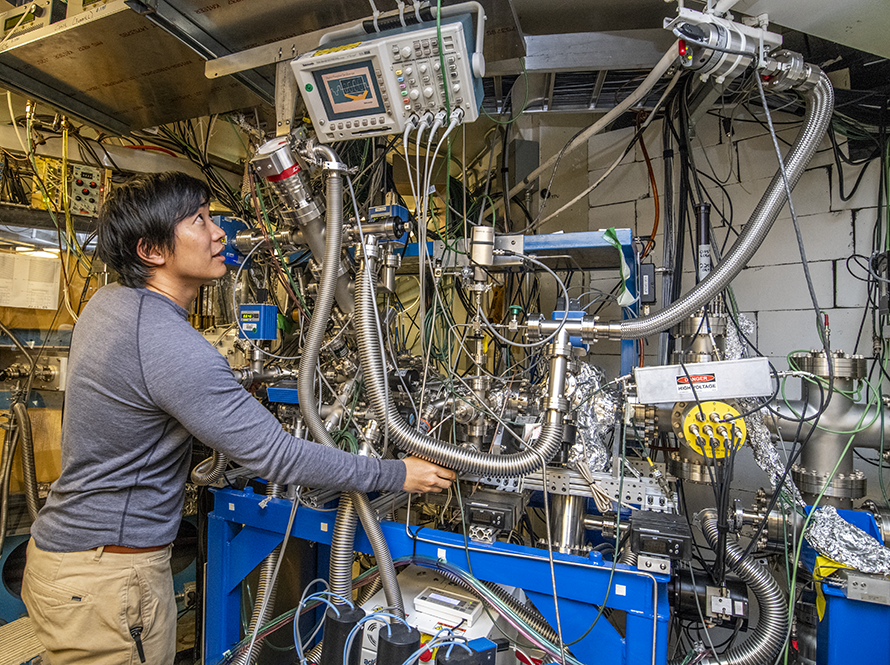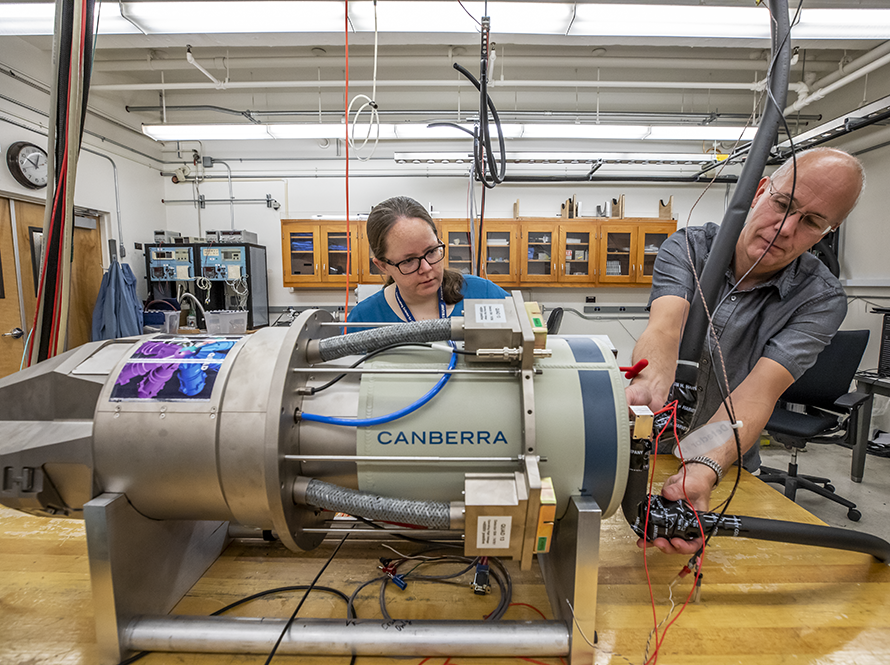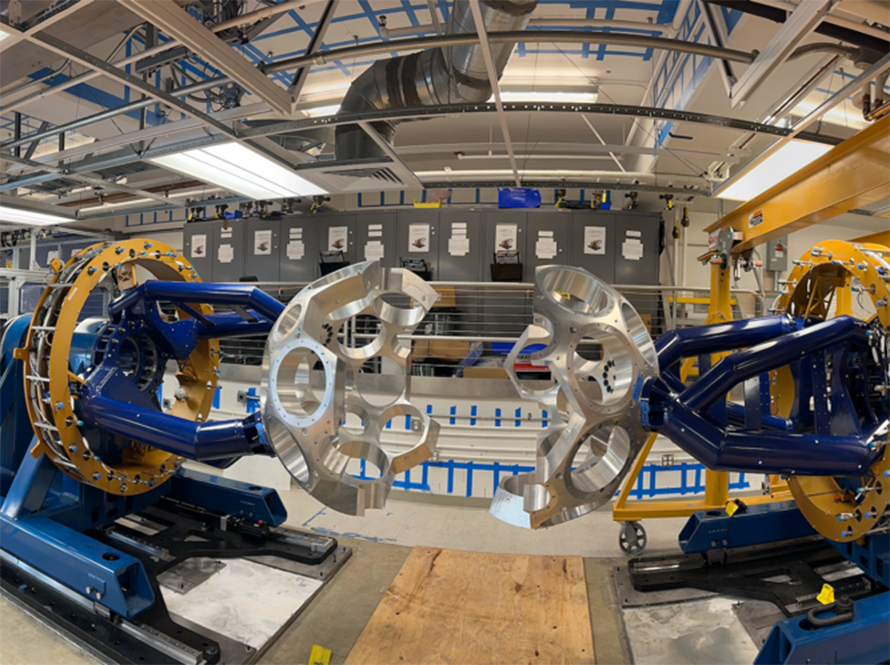
The Heavy Element research program is centered on studying the nuclear and chemical properties of the heaviest elements with Z≥100. These elements do not exist naturally here on Earth and must be made in particle accelerators. Our research is primarily carried out at our local facility, the 88-Inch Cyclotron at Lawrence Berkeley National Lab where we have the capabilities to make and then study these rare heavy elements.

The nuclear structure program is focused on studying and understanding the structure of nuclei at the limits of existence from the most neutron and proton-rich up to the heaviest elements that exist. It spans the nuclear chart, from the spectroscopy of the heaviest nuclei above Z = 100, to the detailed structure of the most exotic carbon isotopes. Research is primarily carried out at major national and international facilities, such as FRIB at Michigan State University, ATLAS at Argonne National Laboratory, RIKEN and TRIUMF. The 88-Inch Cyclotron at LBNL, our home base, is also a key facility in our work.

GRETA (Gamma-Ray Energy Tracking Array), the 4π γ-ray tracking array, will be a powerful instrument needed to accomplish a broad range of experiments that will play an essential role in addressing the intellectual challenges of low-energy nuclear science. GRETA marks a major advance in the development of γ-ray detector systems and can provide order-of-magnitude gains in sensitivity compared to existing arrays. It uses highly-segmented hyper-pure germanium crystals together with advanced signal processing techniques to determine the location and energy of individual γ-ray interactions, which are then combined to reconstruct the incident γ-ray in a process called tracking.